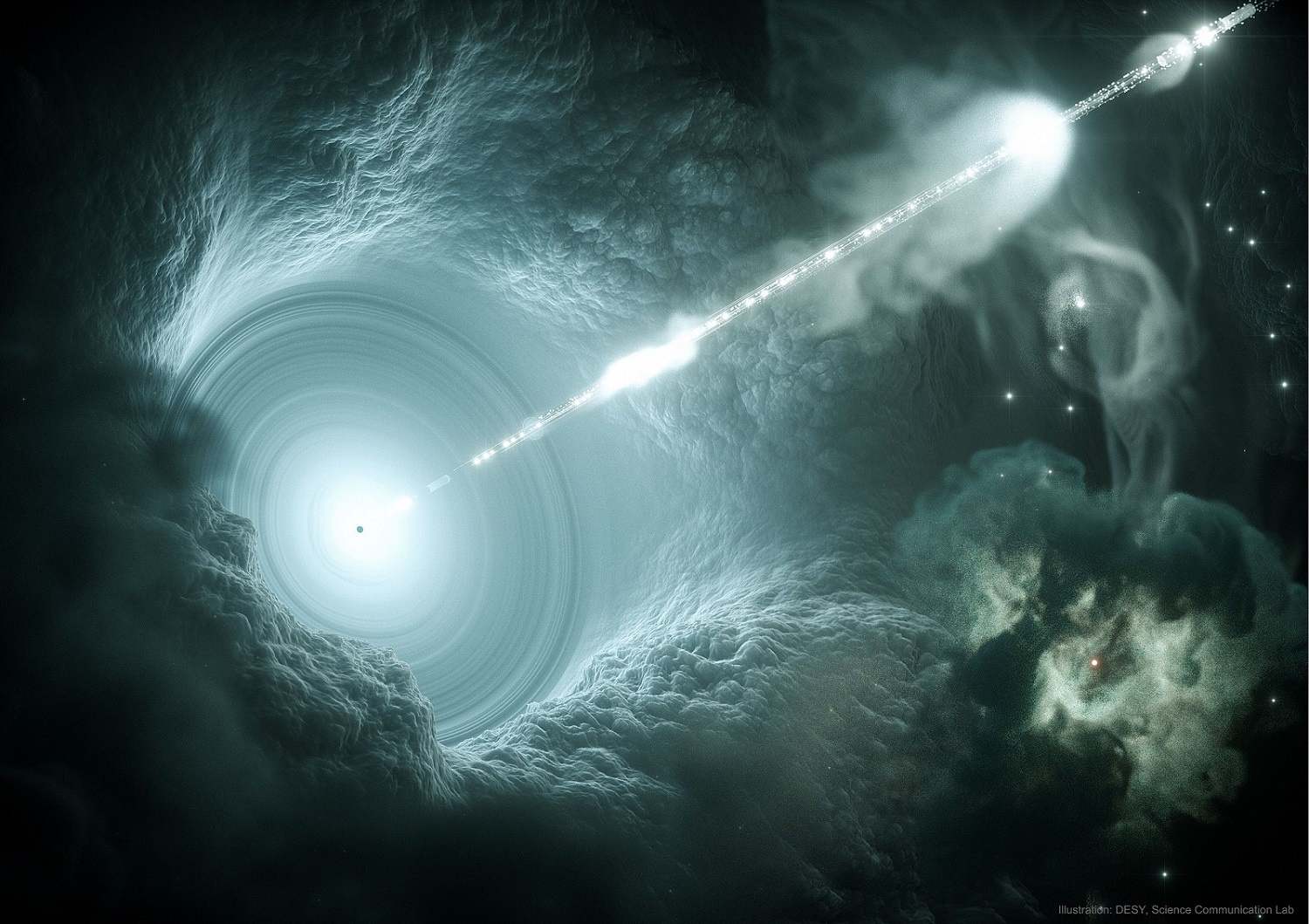Since the 1950s, astronomers have known of galaxies that have particularly bright centers – aka. Active Galactic Nuclei (AGNs) or quasars. This luminosity is the result of supermassive black holes (SMBHs) at their centers consuming matter and releasing electromagnetic energy. Further studies revealed that there are some quasars that appear particularly bright because their relativistic jets are directed towards Earth.
In 1978, astronomer Edward Speigel coined the term “blazar” to describe this particular class of object. Using the telescopes at the Large Binocular Telescope Observatory (LBTO) in Arizona, a research team recently observed a blazar located 13 billion light-years from Earth. This object, designated PSO J030947.49+271757.31 (or PSO J0309+27), is the most distant blazar ever observed and foretells the existence of many more!
Continue reading “Blazar Found Blazing When the Universe was Only a Billion Years Old”
